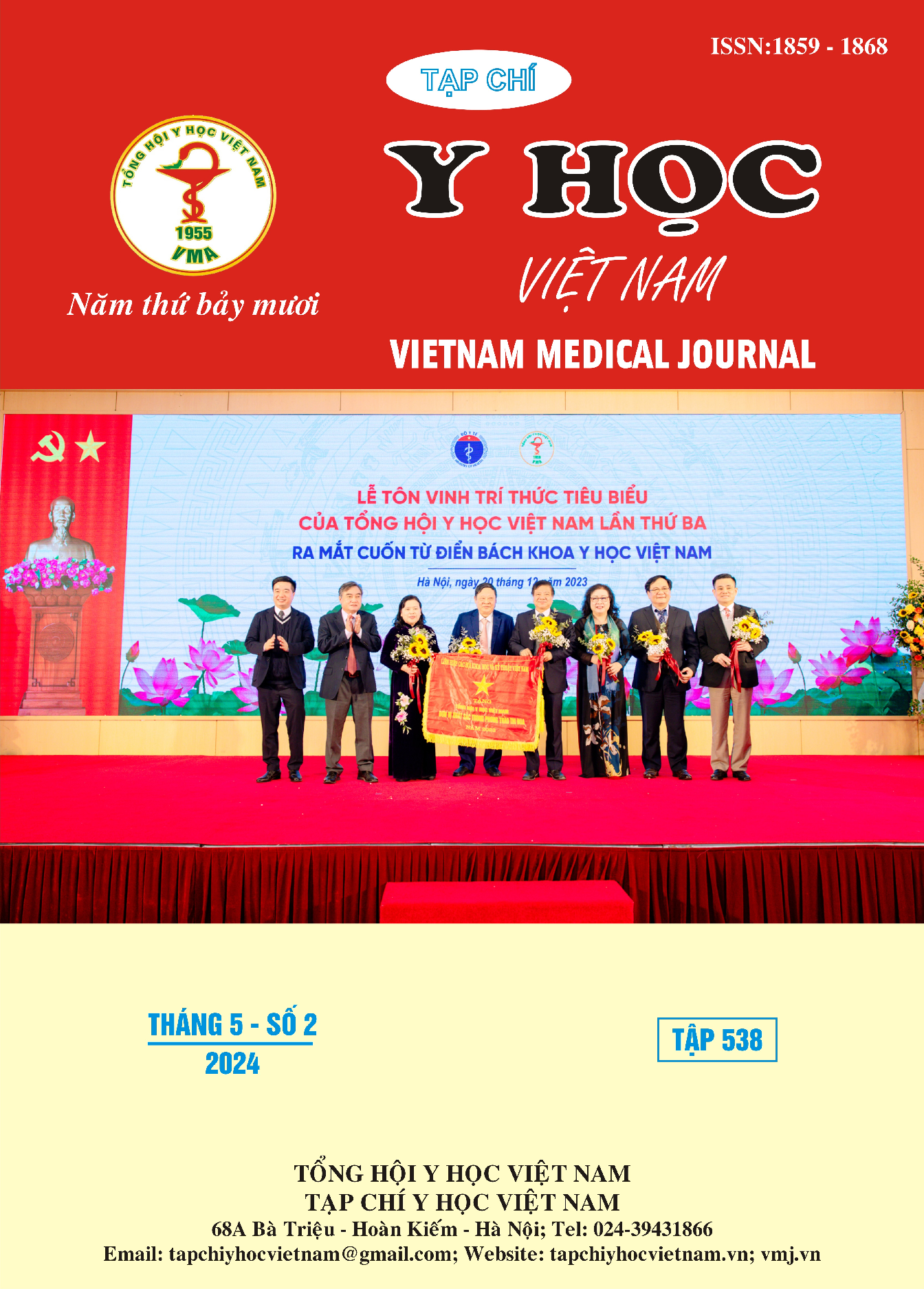THANG ĐIỂM HACOR TRONG TIÊN LƯỢNG THỞ MÁY KHÔNG XÂM NHẬP Ở BỆNH NHÂN ĐỢT CẤP BỆNH PHỔI TẮC NGHẼN MẠN TÍNH CAO TUỔI
Nội dung chính của bài viết
Tóm tắt
Mục tiêu: Khảo sát giá trị thang điểm HACOR trong tiên lượng thở máy không xâm nhập ở bệnh nhân đợt cấp bệnh phổi tắc nghẽn mạn tính cao tuổi. Đối tượng nghiên cứu: Bệnh nhân được chẩn đoán đợt cấp bệnh phổi tắc nghẽn mạn tính cao tuổi có chỉ định thở máy không xâm nhập nhập viện điều trị tại khoa Cấp cứu, Bệnh viện Hữu Nghị trong thời gian từ tháng 1 năm 2022 đến tháng 11 năm 2023. Phương pháp nghiên cứu: Mô tả cắt ngang. Kết quả: 31 bệnh nhân nghiên cứu có tuổi trung bình 83,39 ± 6,10 tuổi; 93,5% là nam giới; nhóm tuổi 80 – 89 tuổi chiếm tỷ lệ 64,5%. Đặc điểm bệnh đồng mắc chiếm tỷ lệ cao nhất là tăng huyết áp 67,7%, tiếp theo là suy tim 58,1%, bệnh mạch vành mạn tính 51,6%, suy thận mạn 38,7%, rung nhĩ 35,5%, đái tháo đường 29,0% và đột quỵ não 25,8%. Tỷ lệ thất bại của bệnh nhân đợt cấp COPD cao tuổi TMKXN là 32,3%. Giá trị điểm HACOR tại thời điểm trước thở máy có giá trị tiên lượng thất bại TMKXN ở bệnh nhân đợt cấp COPD cao tuổi là ≥ 5 điểm với AUC = 0,742, độ nhạy, độ đặc hiệu lần lượt là 71,65% và 86,72%. Giá trị điểm HACOR tại thời điểm 3 giờ sau thở máy có giá trị tiên lượng thất bại TMKXN trên 3 giờ ở bệnh nhân đợt cấp COPD cao tuổi là ≥ 6 điểm với AUC = 0,659, độ nhạy, độ đặc hiệu lần lượt là 71,65% và 86,72%. Giá trị điểm HACOR tại thời điểm trước thở máy không có giá trị tiên lượng thất bại TMKXN trên 3 giờ ở bệnh nhân đợt cấp COPD cao tuổi. Kết luận: Thang điểm HACOR có giá trị tiên lượng thất bại thở máy không xâm nhập ở bệnh nhân đợt cấp bệnh phổi tắc nghẽn mạn tính cao tuổi
Chi tiết bài viết
Từ khóa
đợt cấp COPD, thở máy không xâm nhập, HACOR, tiên lượng.
Tài liệu tham khảo
2. Ngô Quý Châu và cộng sự. Bệnh phổi tắc nghẽn mạn tính. Bệnh học nội khoa. Nhà xuất bản Y học. 2020; 28-49.
3. Zorko, B. and M. Ritchie. Noninvasive Positive Pressure Ventilation for Exacerbation of Chronic Obstructive Pulmonary Disease. Am Fam Physician. 2020; 101(11).
4. Agusti A, Sisó-Almirall A, Roman M, et al. Gold 2023: Highlights for primary care. NPJ Prim Care Respir Med. 2023;33(1):28
5. Duan J, Wang S, Liu P, et al. Early prediction of noninvasive ventilation failure in COPD patients: derivation, internal validation, and external validation of a simple risk score. Ann Intensive Care. 2019; 9(1):108.
6. Hoàng Đình Hải. Nhận xét giá trị của thông khí không xâm nhập BiPAP trong điều trị đợt cấp bệnh phổi tắc nghẽn mạn tính tại khoa Hô hấp Bệnh viện Bạch Mai. Luận văn Thạc sỹ Y học, Trường Đại học Y Hà Nội. 2009.
7. Bhavani M.R, Sushma J, Prathyusha M, et al. Effectiveness of non-invasive positive pressure ventilation for acuteexacerbation of chronic obstructive pulmonary disease. Int J Clin Trials. 2018;5(2):102-106.
8. Đỗ Ngọc Sơn, Đặng Thị Xuân, Phan Thị Lan Hương và cộng sự. Giá trị của thang điểm HACOR để dự đoán kết quả của thở máy không xâm nhập trên bệnh nhân đợt cấp COPD.Tạp chí Y học Việt Nam. 2021; 501(2), 119-123.


